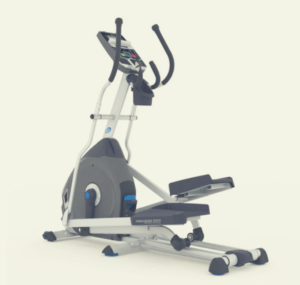
3 Misconceptions About Low Impact Exercise
It’s easy to write off low-impact exercises as not worth your time or effort when choosing to workout. However, it’s worth taking another look at that.
Low Impact vs. Intensity
First, there’s a big difference between impact and intensity, although it’s pretty standard for people to confuse the two.
Low impact doesn’t necessarily need to be low intensity. The term “low impact” simply means that you’re not putting as much stress on your body and, more specifically, your joints.
Think walking versus running or side steps instead of shuffles. In general, if you have one foot on the ground at all times during your workout, you’re on the lower-impact side of things.
It is absolutely possible to do a low-impact, high-intensity exercise. You can gauge your intensity by keeping an eye on your heart rate.
If you’re somewhere between 80-90% of your maximum heart rate, you’re in a high-intensity zone.
Workout Duration
Second, regardless of whether you’re doing low-impact bodyweight exercises, strength training, or using equipment like a recumbent bike or glider, you may need to work for longer in order to get the same amount of calorie burn.
That’s the trade-off. You can burn more calories per minute with a high-intensity workout but may not have the endurance to work as long.
Low impact workouts do give you the option to burn more fat versus carbs, but when you burn off carbs, your body starts to withdraw from its fats storage.
Weightloss Impact
Lastly, there are several things that factor into weight loss. At its most basic, in order to lose weight, you have to burn more calories than you take in.
While this sounds pretty straightforward, things like your basal metabolic rate, hormones, and others can impact this number.
Low impact workouts still burn calories, just as their high-impact counterpart, but it’s especially important to note that your best bet for weight loss is to pair your exercise regimen with a diet based on whole, minimally processed foods.
As an added perk, low-impact workouts, particularly strength training, help to build muscle, which in turn boosts your metabolism.
This boost isn’t the only benefit of low-impact exercise!
What Are The Benefits of Low-Impact Exercise?
Low impact exercise can do more than just help you shed pounds. The first significant benefit is the reduced stress on your body.
For seniors, those who are extremely overweight, and those who suffer from joint pain, low-impact workouts give the opportunity to increase their overall fitness and health without the worry of stress and damage to their bodies.
These types of exercises can also help improve cardiovascular health, help with combating diabetes, can assist in reducing high blood pressure, and can even have an effect on your appetite!
Exercise, including low-impact workouts, can help increase your mood by releasing endorphins into your system.
It can also increase your ability to handle difficult situations, according to Studies in Sports Humanities.
However, where low impact takes the win is in your overall motivation. They say the best workout is the one you actually do, and by choosing a low-impact exercise, you may be more motivated to tie up those laces.
Your ability to last longer through a workout can shift your mindset from an “I can’t” to an “I can.” which can provide longer-lasting results.
High impact, high-intensity workouts allow you to expend a significant amount of energy in short bursts.
On the other hand, low-impact workouts will enable you to slowly increase your endurance, maintaining a higher heart rate for more extended periods of time. This concept isn’t limited to high intensities.
Low-intensity steady-state workouts, also referred to as LISS workouts, focus on keeping your heart rate low enough where you can utilize the increased availability of oxygen to burn fat.
Ideally, in a LISS workout, you’d want to remain in a heart rate zone of 70-80% of your max.
By choosing low impact workouts, you also have the benefit of building more muscle. Strength training is an excellent low-impact option that allows you to increase your muscle mass.
Things like squats, deadlifts, curls, or even bodyweight exercises like split squats and pushups, are all low impact exercises with enormous benefits.
Strength training is also incredibly flexible, as you’re able to increase or decrease your intensity by simply adding more weight or reps.
Like all exercises, however, it’s incredibly important that you choose form over speed/intensity in order to continue to protect your joints and body from injury.
Taking the high-impact moves out of your workout should allow you to focus on ensuring you’re using the proper form, and in a well-balanced low-impact activity, you’ll see increased mobility which will, in turn, reduce soreness, increase blood flow, and relieve tension.
Is Low Impact Exercise Less Effective?
All right, so you know that you can lose weight and that there are plenty of benefits from low-impact workouts, but the capability is significantly different than effectiveness.
The answer to this question is a little less definitive than a yes or a no because it depends on how you define effective.
If your definition of effectiveness is calorie burn per minute, then low-impact exercise isn’t going to be as effective as high-impact training.
If you think about a sprint, for example, you’ll expend more energy in a quick 30-second burst than you will with 30 seconds of walking.
However, if your version of effective is burning fat and building muscle, then low-impact training is incredibly effective.
There’s even research out there that indicates that low-impact workouts are just as effective as high-impact training when it comes to reducing the risk of heart disease.
This isn’t limited to cycling or the elliptical. You can also see your hard work pay off through yoga and pilates.
That said, there are ways to make your low-impact workout even more effective.
You can add in upper body motions like swinging your arms during a walk, adding weights to your bodyweight exercises, or bumping up the speed of your walking.
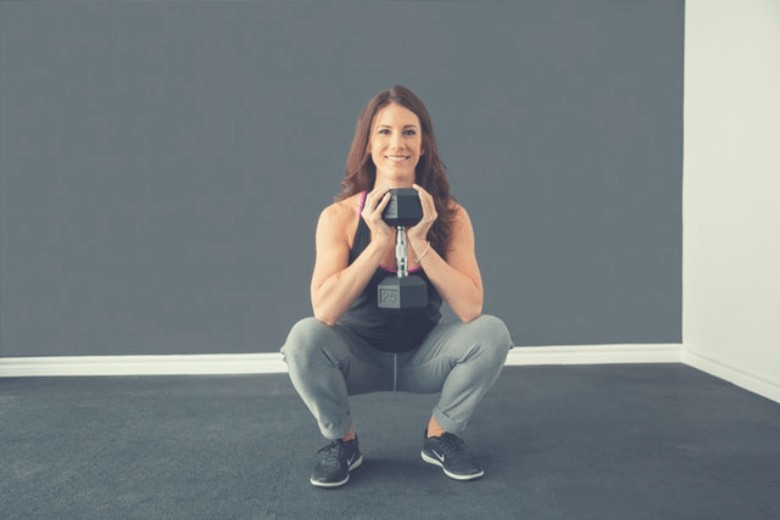
What is the Best Low Impact Exercise?
As mentioned earlier, the best exercise is the one that you’re willing and able to do safely. That said, there are some really great low-impact workouts that top the list.
First, and also the most cost-effective, is walking. Walking is also an incredibly flexible form of working out.
You can go high-intensity with a power walk or adding in incline work, or go with a longer LISS workout.
People of all fitness levels can benefit from walking, and you can do it anywhere.
Machine-based workouts are great to add to a low-impact regimen and provide a lot of variety.
Machines like ellipticals, recumbent bikes, rowers, and cycling bikes help you maintain your speed and intensity, which can be beneficial to non-athletes and beginners.
It’s a common misconception that these types of workout equipment solely focus on your legs.
Cycling and recumbent bikes require core stability, while ellipticals these days also include the ability to adjust the tension of the arm handles to increase the upper body benefits.
Rowers offer a full-body workout and have been touted as the most effective full-body workout machine.
If full-body is your aim, but you’re not up for spending thousands on a rower, swimming is another option.
The water reduces the stress on your body and increases your heart rate, but it also provides resistance which results in a workout that effectively combines cardio and strength training.
Don’t worry if laps aren’t your style. This is also true for water aerobics classes like Aqua Zumba.
Low impact classes like yoga, pilates, and Zumba are excellent options for a low-impact workout.
If yoga is on your list of classes to try, it’s essential to take a look at the type of class. For example, there are many types of yoga.
A Vinyasa flow that moves from one pose to another quickly will have more cardio benefits.
In contrast, a Hatha class where you hold poses for longer and move slower through the flow may be more beneficial for strength and mobility.
This is also important for Zumba, and other cardio dance classes as some are a higher impact than others.
Is It Okay to Do Low Impact Exercises Every Day?
One of the benefits of choosing a lower impact workout is that you’re able to maintain a daily routine without needing to take significant time to recuperate as you do with high-impact training.
Not only CAN you do a low impact workout each day, but it’s also recommended.
However, and this is especially important if you’re doing low-intensity steady-state workouts, your body will become acclimated to a singular workout, so try to switch up your routine.
Try to create a good balance of cardio and strength workouts.
How long should you spend on your low-impact workout routine? Aim for an hour a day if you’re solely doing lower impact workouts.
You can split this up throughout the day if you need to, whether that be several 15-minute walks or a half-hour morning yoga flow and a half-hour evening session on the elliptical.
How Many Calories Does a 30-Minute Low Impact Workout Burn?
Of course, this varies greatly on the type of low-impact workout you choose, but on average, you’re looking at about 5-9 calories per minute.
An aerobic dance class or 30-minute session on the elliptical averages about six calories per minute for someone around 160 lbs, where swimming or a high-speed power walk burns a fruitful 8-9 calories per minute in the same sized person.
Recommended Low-Impact Machines
| Hydrow Rower | Teeter FreeStep LT3 | XTERRA Fitness RSX1500 |
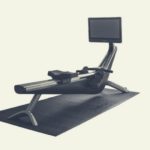 |
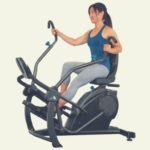 |
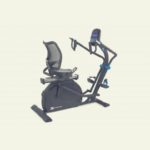 |
| Great rowing machine with a 22″ touchscreen, and endless workout content to get you sweating in no time. | Low-impact friendly seated exercise machine that reduces the load on your knees while still providing you a full-body workout. | This seated stepping machine allows you to get an amazing workout regardless of your age or ability. |
 |
 |
 |
Final Thoughts
Losing weight can feel complicated and frustrating, especially if you’ve tried trendy new classes and fancy expensive gyms with no results.
It can also feel defeating and disheartening when you’re unable to even try certain options due to physical limitations or if you’re new to the fitness world.
Choosing a low impact exercise routine can remove those obstacles.
Not only can low-impact training help you lose weight, but it’s also accessible to anyone and has a host of benefits.
Low impact workouts are especially helpful for people who suffer from joint pain, who are significantly overweight, or who are just starting their fitness journey.
As with its high-impact sibling, consistent training can lead to increased cardiovascular health, improved mental health, a lower resting heart rate, and diabetes, with the added bonus of increasing mobility while reducing the opportunity for injury.
It’s important to note, as with every type of exercise, in order to reap the significant weight loss rewards, it needs to be paired with a healthy diet.
Unfortunately, there’s no one diet that works best for everyone, but when choosing a healthy eating lifestyle, it’s best to take the same approach as you do you’re your workouts.
Look for a diet that you think you can actually stick to, and make sure that it focuses on consuming foods that are less processed.
Although low-impact workouts are less stressful to your body, if you’re struggling with certain health obstacles or physical limitations, it’s always important to talk with your doctor before starting a new type of workout.



